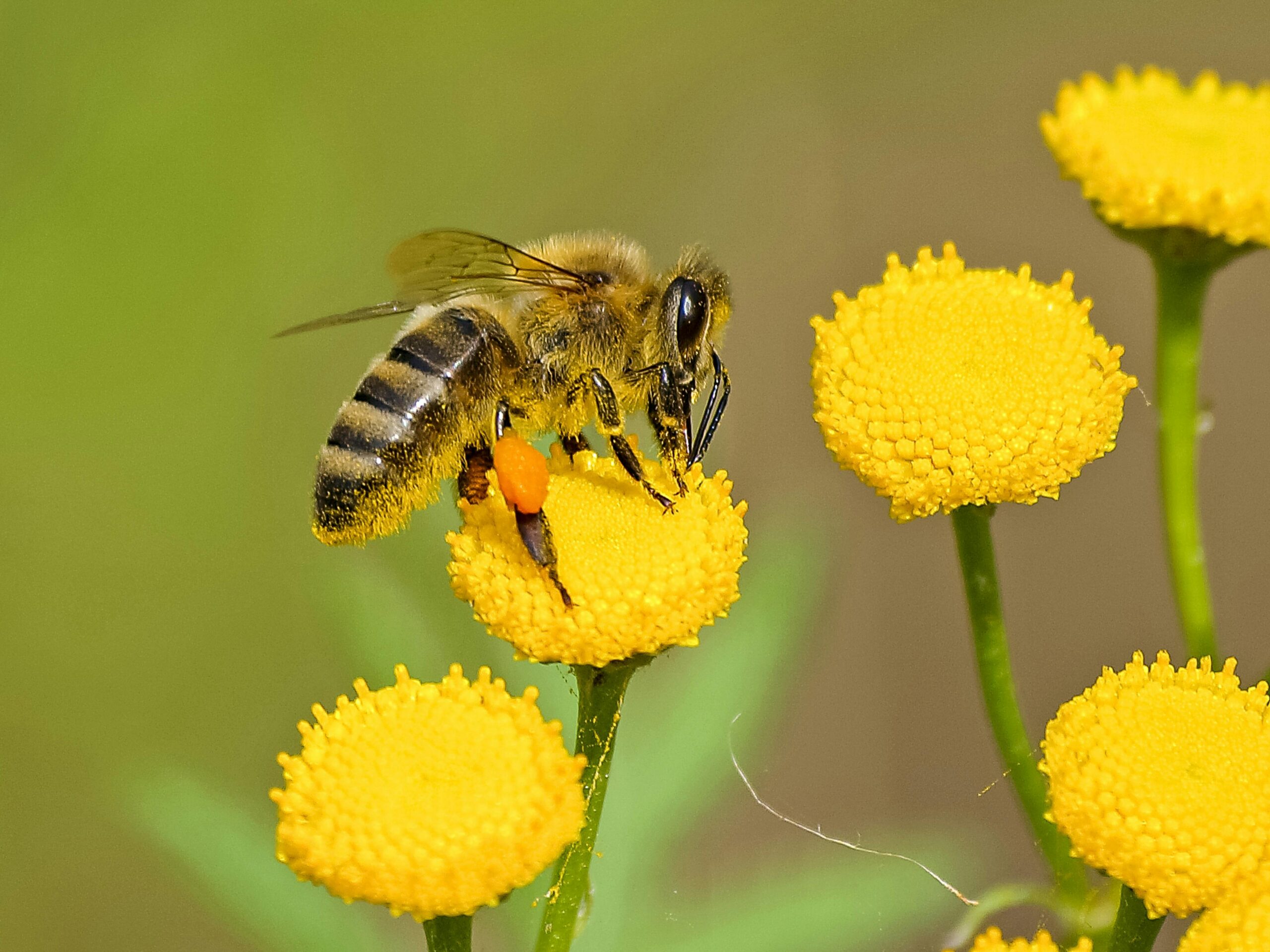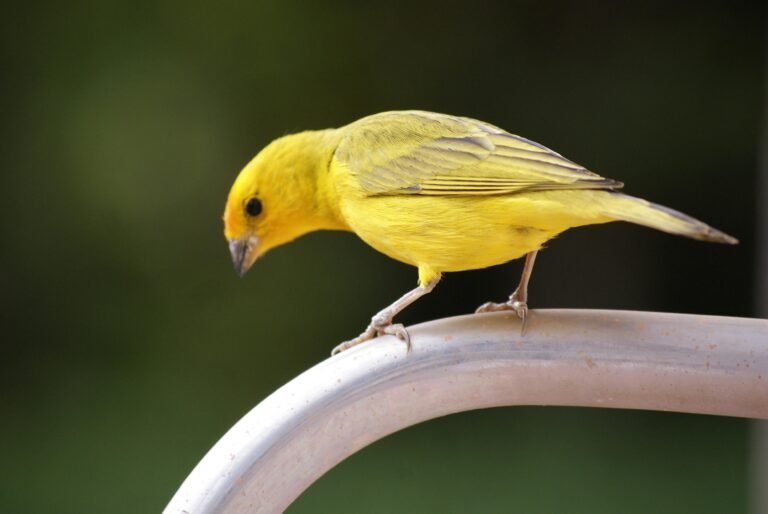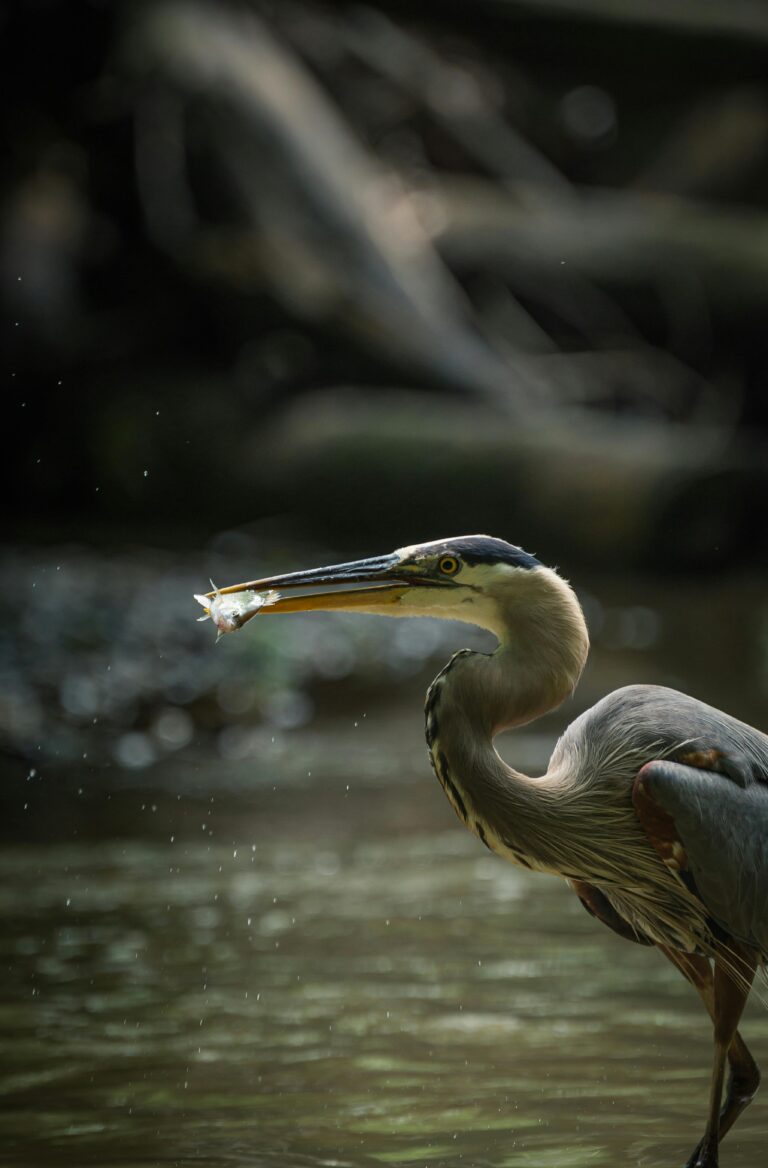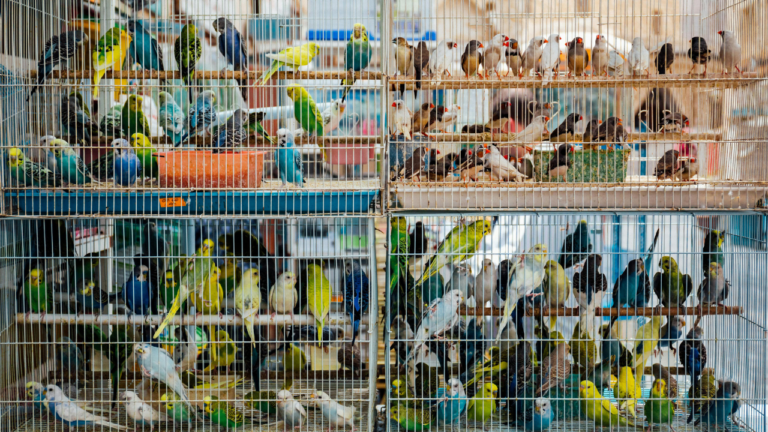Bee Food: What Do Bees Eat?

Hey everyone, welcome back to Feathered Mates! Today I will talk to you about Bee Food: What Do Bees Eat?
Bees are essential pollinators that play a vital role in ecosystems and agriculture. While much attention is given to their contributions to the environment, bees themselves are part of the food chain. In this article, we’ll explore the fascinating topic of bee food—what they eat—and their predators, or what eats bees. Along the way, we’ll address questions like “What eats bees?” “Do bees eat honey?” “Do bees eat pollen?” and even quirky ones like “Do bees eat clownfish?” Let’s dive into the world of bee diets and their place in nature.
What Do Bees Eat?
The diet of bees varies depending on the species, but generally, most bees consume nectar and pollen. These two primary food sources provide the energy and nutrients bees need to survive, reproduce, and perform their ecological role as pollinators.
Nectar: The Energy Source
Nectar is a sugary liquid secreted by flowers to attract pollinators like bees. Bees collect nectar using their long proboscis, storing it in their crop (a specialized part of their digestive system) before returning to the hive. Nectar serves as the primary energy source for bees, providing the carbohydrates they need to power their flight and other activities.
Pollen: The Protein Powerhouse
Pollen is a powdery substance that flowers produce for reproduction. For bees, it’s an essential source of protein, vitamins, and minerals. Worker bees mix pollen with a bit of nectar to create “bee bread,” a nutritious substance fed to larvae and other members of the hive.
What Do Honey Bees Eat?
Honey bees have a diet similar to other bee species but are particularly known for their ability to produce and store honey. Their diet consists of:
- Nectar: As mentioned, nectar is transformed into honey through a process of evaporation and enzyme activity inside the hive. Honey serves as a long-term energy reserve for the colony, especially during the winter months.
- Pollen: Honey bees actively collect pollen to feed their brood (larvae). This nutrient-rich food is critical for the growth and development of young bees.
- Honey: Interestingly, honey bees consume their own honey. This is a primary food source for adult bees, especially when nectar sources are scarce.
Do Bees Eat Honey?
Yes, bees do eat honey. Honey is a vital food reserve for bees, particularly during colder seasons when flowers are not in bloom. Worker bees consume honey to fuel their energy-intensive tasks, such as foraging, maintaining hive temperature, and feeding the queen and larvae.
Do Bees Eat Pollen?
Yes, bees eat pollen. Pollen is crucial for their diet as it provides protein, essential amino acids, lipids, and other nutrients. Worker bees often consume pollen themselves and also use it to create bee bread to feed larvae. Without pollen, the colony cannot thrive.
Do Bees Eat Meat?
While most bees are herbivorous, some exceptions exist. Vulture bees, found in Central and South America, are a fascinating example. These bees feed on rotting meat instead of nectar. They’ve evolved to consume carrion and use it to produce a protein-rich “meat honey” to feed their larvae. However, this behavior is rare and not representative of most bee species.
Do Bees Eat Clownfish?
The idea of bees eating clownfish might sound absurd, but it’s worth clarifying. Bees do not eat clownfish or any fish. Bees are primarily herbivores, and their diet revolves around plant-based substances like nectar and pollen. Any association between bees and clownfish is likely due to misconceptions or playful hypothetical scenarios.
What Eats Bees?
Now that we’ve covered what bees eat, let’s shift our focus to their predators. Bees are preyed upon by a variety of creatures in the animal kingdom. Predation is a natural part of the ecosystem, and bees face threats from insects, birds, amphibians, and mammals.
1. Insects That Eat Bees
Several insect species prey on bees, including:
- Wasps and Hornets: Wasps and hornets are among the most aggressive predators of bees. They attack bee colonies to steal honey or capture bees to feed their own young. Asian giant hornets, also known as “murder hornets,” are particularly notorious for targeting honey bee hives.
- Praying Mantises: Praying mantises are ambush predators that often catch and eat bees mid-flight. Their quick reflexes make them efficient hunters.
- Spiders: Certain spider species, such as crab spiders, wait near flowers to capture unsuspecting bees.
2. Birds That Eat Bees
Some bird species include bees in their diet. Examples include:
- Bee-Eaters: As their name suggests, bee-eaters are birds that specialize in hunting bees. These colorful birds use their sharp beaks to catch bees and remove their stingers before consuming them.
- Swallows and Robins: These birds occasionally prey on bees, especially when other food sources are scarce.
3. Do Frogs Eat Bees?
Yes, some frogs do eat bees. Frogs are opportunistic feeders and will consume almost any small, moving creature that fits into their mouths. This includes bees, especially if the bee ventures close to water or lands near a frog’s hiding spot.
4. Mammals That Eat Bees
- Bears: Bears are well-known for their love of honey, but they’ll also eat bees and their larvae when raiding hives.
- Skunks: Skunks often scratch at hive entrances to lure out guard bees, which they then eat. Bee larvae are also a favorite snack for skunks.
- Badgers: Like skunks, badgers sometimes raid bee nests for their larvae.
5. Reptiles That Eat Bees
Certain reptiles, such as lizards, may eat bees when the opportunity arises. Lizards are also opportunistic predators and will catch bees as part of their diet.
Why Are Bees Eaten?
Predators eat bees for their nutritional value. Bees are rich in protein and fats, making them an appealing food source for various animals. Additionally, bee larvae and pupae inside hives are highly nutritious and attract many predators.
Do Humans Eat Bees?
While not common, humans in some cultures consume bees and their larvae. Insects, including bees, are considered a sustainable and protein-rich food source in certain parts of the world. Honey bee larvae are sometimes fried or roasted and eaten as a delicacy.
How Do Bees Defend Themselves?
Bees have evolved several defense mechanisms to protect themselves and their colonies:
- Stinging: Worker bees can sting predators to defend themselves. However, honey bees die after stinging due to the barbed nature of their stingers.
- Swarming: When a predator threatens the hive, bees may swarm together to overwhelm the intruder.
- Nest Location: Many bee species build their nests in hard-to-reach places, such as underground or inside hollow trees, to avoid predators.
- Chemical Signals: Bees release alarm pheromones to alert other members of the colony to danger.
Bees are remarkable creatures that contribute immensely to the environment. Their diet primarily consists of nectar and pollen, but some species, like vulture bees, have unique dietary adaptations. While bees face threats from various predators, they have developed strategies to protect themselves and their colonies. Understanding both what bees eat and what eats bees helps us appreciate their role in the intricate web of life. Protecting bees from excessive predation and environmental threats ensures the survival of these vital pollinators—and, by extension, the health of our ecosystems.
Click here to know What Do Birds Eat?
It can be said that birds are very peaceful creatures and they always fascinate us with their behavior. So, As a responsible bird owner, acquiring the necessary knowledge about birds is of course very important. Every bird owner should understand and review accurate information about birds and guide birds properly. Hope we have helped you enough to know Bee Food: What Do Bees Eat? Stay with us to learn about the right bird selection, bird care, birds nests and all things related to birds. May the relationship between you and your pet become stronger.







